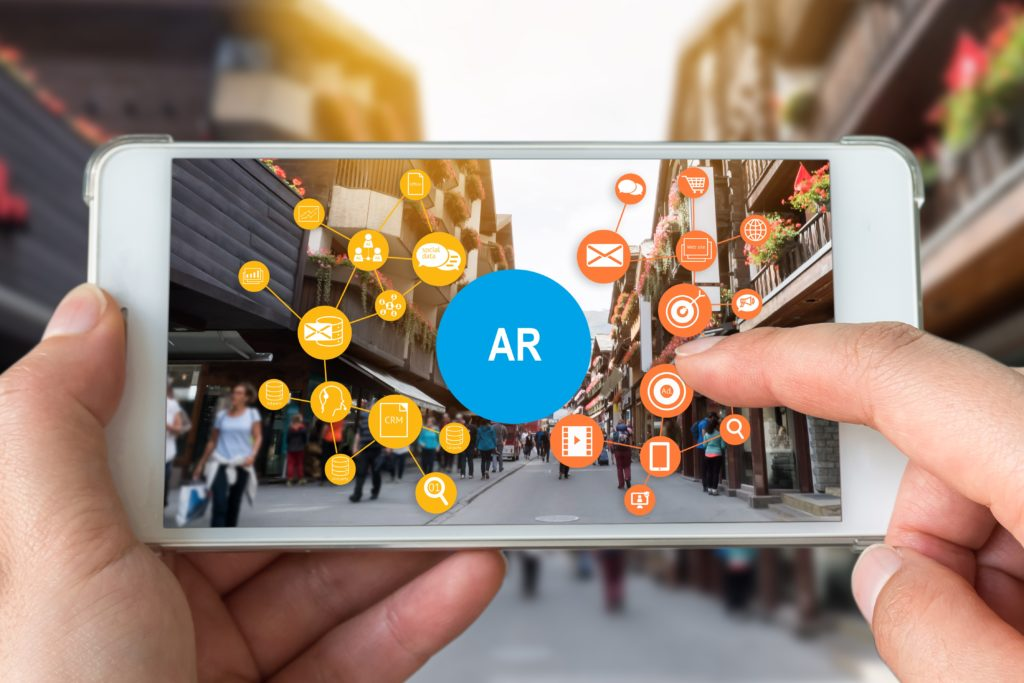Buzz Haven: Your Daily Dose of News
Stay informed and entertained with the latest buzz in news, trends, and insights.
Augmented Reality: The New Playground for Your Imagination
Unleash your creativity in the exciting world of Augmented Reality! Discover how AR can transform your imagination into reality today!
Exploring Augmented Reality: How It Transforms Creativity and Play
Augmented Reality (AR) is revolutionizing the way we engage with creativity and play by blending digital content with our physical environment. From interactive art installations to immersive gaming experiences, AR allows users to explore new realms of imagination. Artists are harnessing AR technology to create captivating pieces that come to life through smartphones or AR glasses. This innovation not only enhances artistic expression but also invites audiences to participate actively, redefining the traditional lines between creator and spectator.
In the realm of gaming, Augmented Reality is transforming play into an enriched, engaging experience. Games like Pokémon GO have shown how AR can encourage players to explore their surroundings, turning everyday walks into thrilling adventures. Through integrating virtual objects into real-world settings, AR fosters a sense of connection and community among players. As AR technology continues to advance, we can expect even more groundbreaking applications that blur the boundaries of reality and imagination, making play an exhilarating journey of discovery.

Top 5 Applications of Augmented Reality in Everyday Life
Augmented Reality (AR) is rapidly transforming the way we interact with our surroundings, making everyday activities more engaging and efficient. One of the most recognized applications is in the realm of education. AR allows students to explore complex concepts in a tangible way, turning textbooks into interactive experiences. For instance, biology students can visualize 3D models of organs or cellular structures, enhancing their understanding of intricate processes. Furthermore, AR applications in museums enable visitors to experience exhibits through interactive displays that provide additional context and information.
Another significant application of AR can be found in the retail industry. Many brands now offer AR tools that allow customers to try on products virtually, such as clothing or makeup, from the comfort of their homes. By using their smartphones, shoppers can see how accessories fit into their outfits or how a new shade of lipstick looks on their lips. This technology not only enhances the shopping experience but also reduces return rates, as customers can make more informed decisions. From education to retail, the applications of augmented reality are pivotal in bridging the gap between the digital and physical world, enriching our daily lives in countless ways.
What is Augmented Reality and How Can It Ignite Your Imagination?
Augmented Reality (AR) is an innovative technology that overlays digital information and virtual objects onto the real world, enhancing our perception of our surroundings. By using devices such as smartphones, tablets, or AR glasses, users can interact with elements that are seamlessly integrated into their physical environment. This merging of the digital and physical worlds opens up new possibilities in entertainment, education, and commerce, making ordinary experiences extraordinary. For instance, through AR, students can visualize complex scientific concepts, while gamers can engage in immersive gameplay that transforms their living rooms into fantastical battlegrounds.
What truly sets Augmented Reality apart is its ability to ignite our imagination and inspire creativity. By allowing individuals to visualize and manipulate virtual objects as if they were part of the real world, AR encourages exploration and experimentation. Artists can create interactive installations, architects can visualize buildings before they are constructed, and consumers can try products virtually before making a purchase. As we embrace this technology, the potential to innovate and reimagine our reality expands, inviting us to think beyond the conventional and embrace a more dynamic and interactive world.